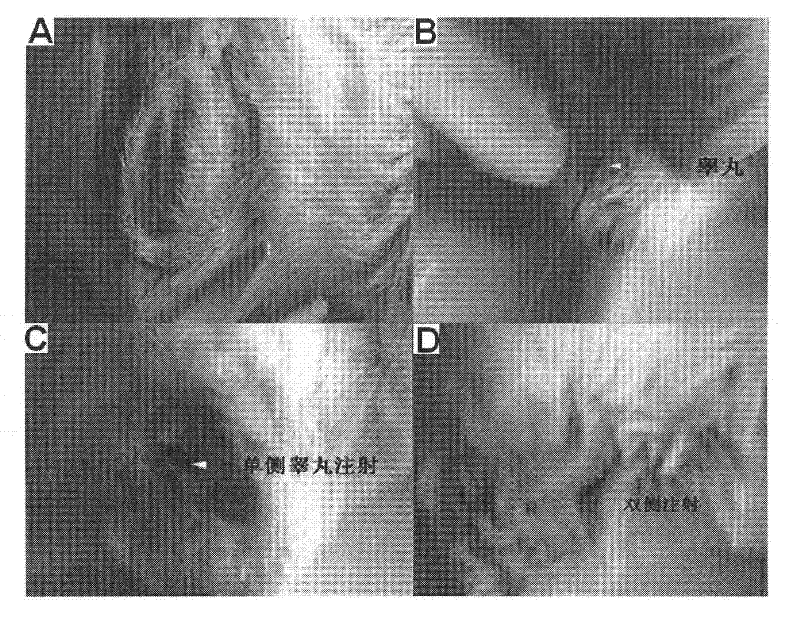New method for improving transgenic efficiency of animals
A transgenic and new method technology, applied in the new field of improving the efficiency of animal transgenics, can solve the problems of huge differences in the positive rate of transgenic animals and low efficiency
- Summary
- Abstract
- Description
- Claims
- Application Information
AI Technical Summary
Problems solved by technology
Method used
Image
Examples
Embodiment 1
[0036] Example 1 Obtaining transgenic offspring mice by spot injection of the mother
[0037] 1. Preparation of experimental materials and reagents
[0038] 1. Experimental materials
[0039] Kunming white mice aged 5-8 weeks were purchased from the Experimental Animal Center of the Chinese Academy of Medical Sciences. A total of 180 female mice and 90 male mice were used in the experiment. Trypan blue stain, pentobarbital sodium, PMSG, HCG, human penicillin / streptomycin, tryptone, yeast extract, DEPC (diethylpyrocarbonate), maleic acid, Tween-20, SDS, Agar powder, DH5α competent cells, Lipofectin2000, 2×Taq PCR MasterMix, X-gal, IPTG, One-Step RT Kit, DIG High Prime DNA Labeling and Detection StarterKit 1, Agarose Gel Recovery Kit, Tissue Genomic DNA Extraction Kit; enhanced fluorescent protein particles: pIRES-eGFP, endotoxin-free plasmid extraction kit, endonuclease BamH I, endonuclease Xho I, M2 medium.
[0040] 2. Reagent preparation
[0041] 1) Physiological saline:...
Embodiment 2
[0185] Example 2 Obtaining transgenic offspring sheep by dot injection on the mother generation
[0186] According to the above experimental procedure, the present invention successfully transfers the inhibin gene into the testis tissue and ovary tissue of sheep respectively through spot injection. The offspring obtained by mating male sheep with testes and normal female sheep were called group A, and the offspring obtained by mating female sheep with ovary injection and normal male sheep were called group B, the testes of male sheep and the ovaries of female sheep were equal After the operation, the offspring obtained from mating are called group C. The comparison results of the PCR positive rate of the offspring of the sheep in the three experimental groups are as follows: The positive rate of the tail tip tissue of the F1 generation sheep in the A group was 46.2% (6 / 13). The positive rate of PCR detection of tail tip tissue of F1 sheep in group B was 38.5% (5 / 13), and the ...
PUM
 Login to View More
Login to View More Abstract
Description
Claims
Application Information
 Login to View More
Login to View More - R&D
- Intellectual Property
- Life Sciences
- Materials
- Tech Scout
- Unparalleled Data Quality
- Higher Quality Content
- 60% Fewer Hallucinations
Browse by: Latest US Patents, China's latest patents, Technical Efficacy Thesaurus, Application Domain, Technology Topic, Popular Technical Reports.
© 2025 PatSnap. All rights reserved.Legal|Privacy policy|Modern Slavery Act Transparency Statement|Sitemap|About US| Contact US: help@patsnap.com



